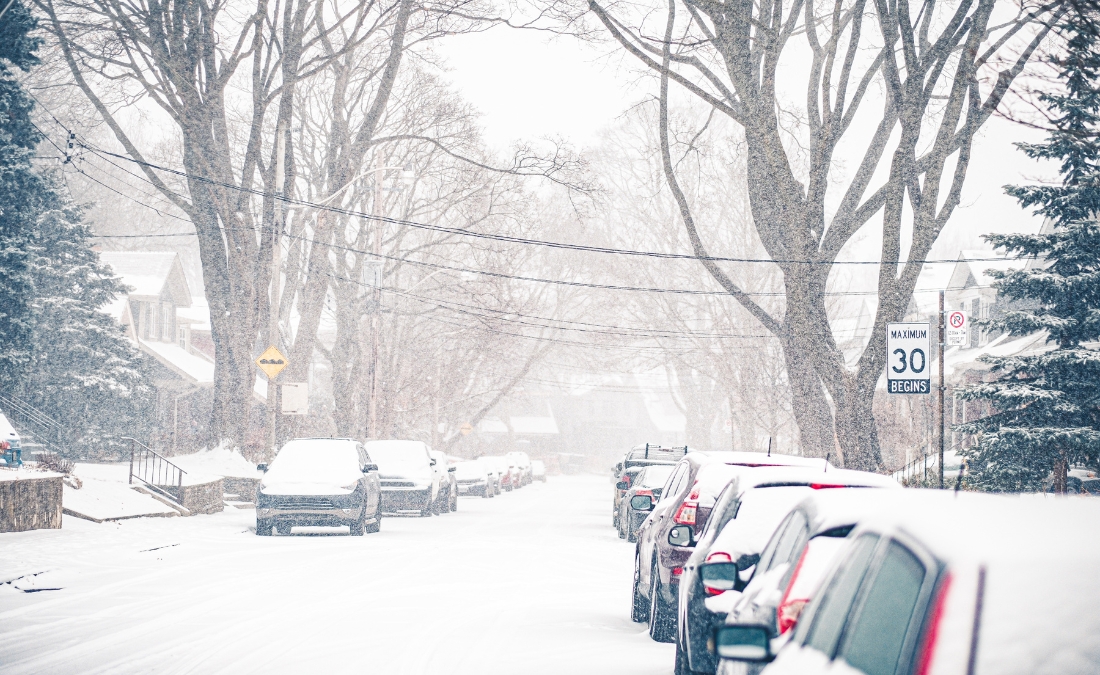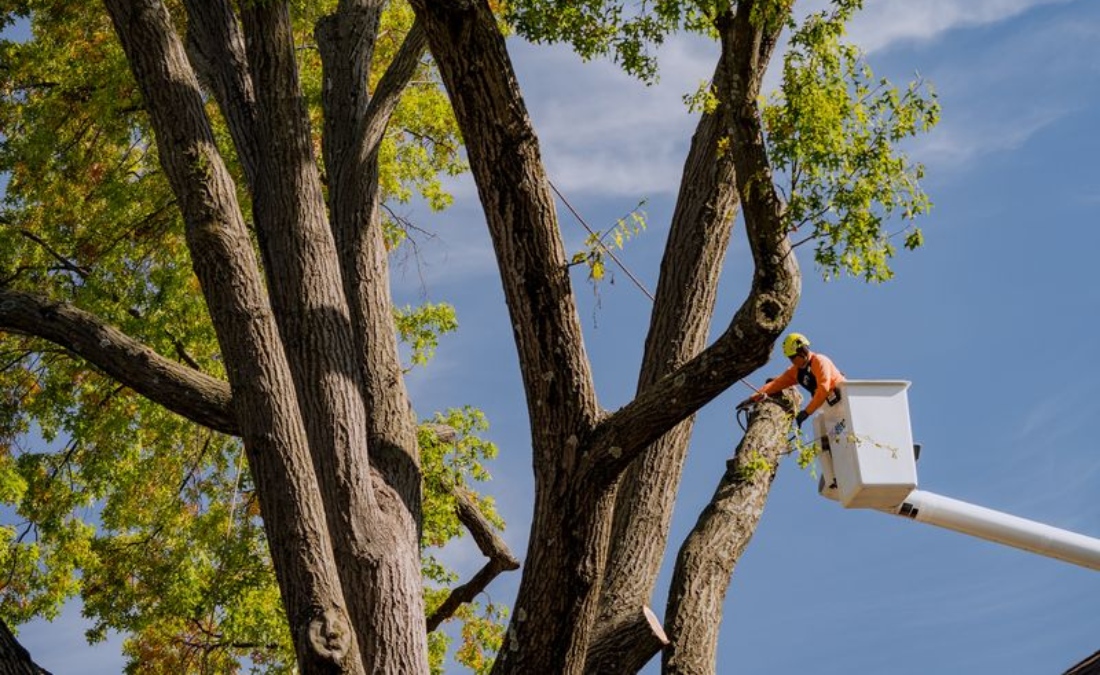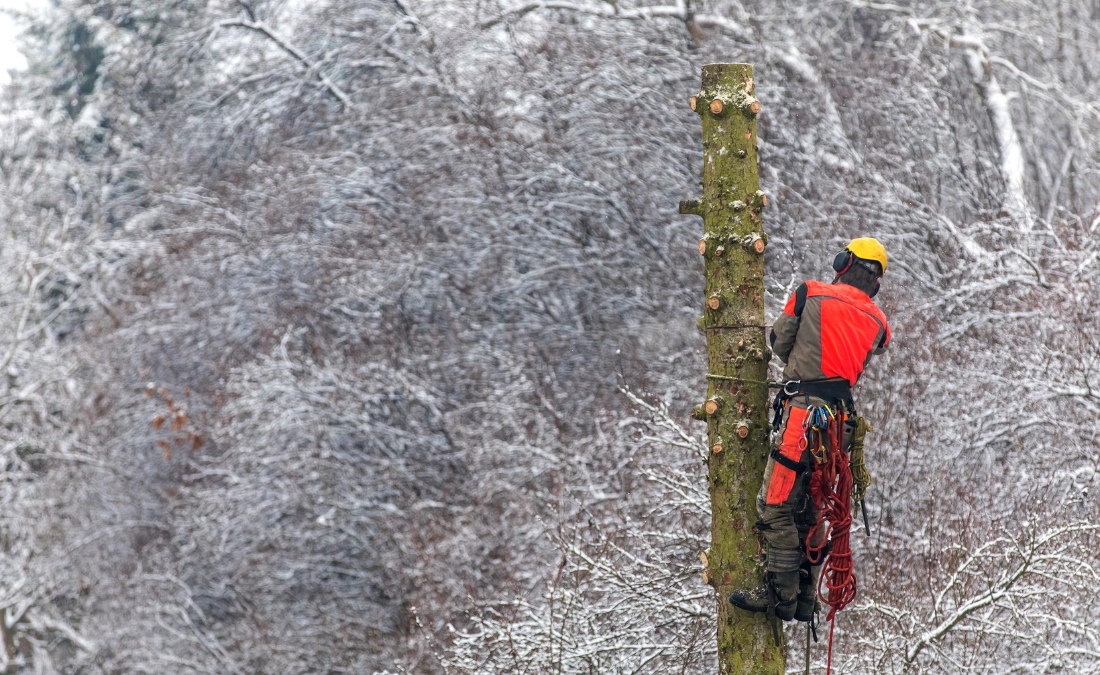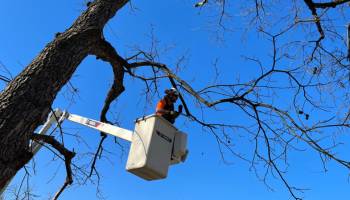Choosing the Right Tree and Planting Service in the Quad Cities: Species, Timing, and Local Experts
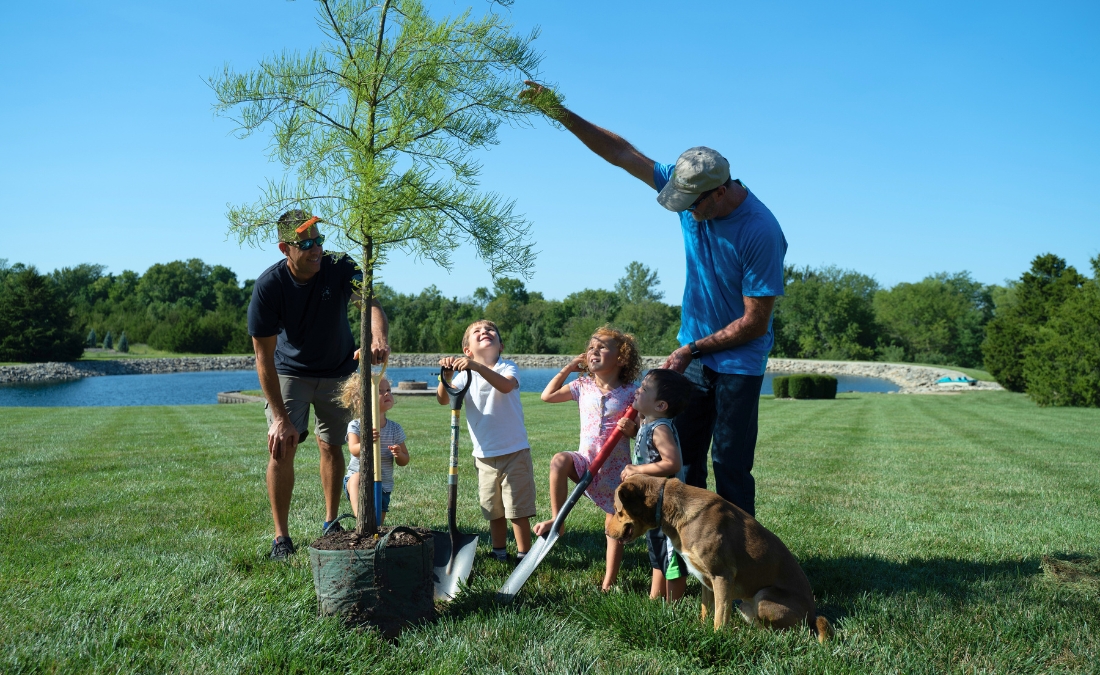
Not all trees survive in the Quad Cities’ soil and climate. Find out which species succeed, when to plant & how local experts ensure your landscape flourishes.
Whether you’re landscaping a new home in Bettendorf’s suburbs or adding to the mature canopy in Davenport’s historic McClellan Heights, choosing the right trees and planting approach can make the difference between thriving landscapes and costly mistakes. With the Quad Cities’ unique climate across two states, homeowners need more than generic planting advice.
The good news is that with proper planning and species selection, you can create a landscape that not only survives but thrives for generations, increasing your property value while providing shade, beauty, and environmental benefits for your family. And working with the right Quad Cities tree planting service can ensure your investment succeeds.
Key Takeaways
- Neighborhood microclimates significantly impact species selection, with Davenport’s riverfront properties requiring different trees than Bettendorf’s newer developments or areas like Moline on the Illinois side that have heavy clay soils.
- Native Iowa species, like bur oak and redbud, consistently outperform exotic options in Quad Cities conditions, showing superior survival rates and requiring less maintenance over time.
- Fall planting windows from September through October provide optimal establishment conditions for trees in Iowa’s continental climate.
- ISA Certified Arborists help navigate municipal requirements and avoid utility conflicts that can result in expensive damage to underground infrastructure or overhead power lines.
- Professional tree planting services demonstrate significantly higher success rates compared to DIY efforts, with comprehensive warranties that protect your landscaping investment.
How to Choose the Right Trees for Your Quad Cities Property
Before falling in love with a particular tree species, it’s best to first understand what your specific property can successfully support. The difference between a thriving oak and a struggling maple often comes down to matching species needs with site conditions.
Smart tree selection begins with a systematic evaluation of your property’s unique characteristics. This analysis forms the foundation for species selection and determines whether professional consultation might be beneficial for your specific situation.
Soil and Drainage
Quad Cities properties vary dramatically in soil composition. Detailed soil mapping helps identify whether your property has well-draining prairie soils or clay-heavy river deposits.
Davenport’s historic neighborhoods, like Hamburg and McClellan Heights, often feature these soil characteristics:
- Rich, well-draining soils that support diverse tree species
- Potential seasonal flooding near the Mississippi River, requiring the need for flood-tolerant species, like American elm or silver maple, in low-lying areas
- Excellent conditions for oak, maple, and other traditional shade trees on higher ground
Bettendorf’s newer subdivisions, however, commonly present different challenges:
- Compacted construction soils requiring amendment
- Better drainage than river-adjacent properties
- Suitability for species like honey locust or Kentucky coffee tree that tolerate less-than-ideal soil conditions
- Opportunity for wider species selection with proper site preparation
Microclimate Considerations
The Quad Cities’ location creates unique growing conditions that affect species selection. Urban heat islands in downtown Davenport can create zones that are effectively one hardiness zone warmer than surrounding areas, allowing for species like Eastern redbud or flowering dogwood that might struggle in more exposed rural locations.
Successful homeowners observe these microclimate factors:
- Wind exposure patterns that affect winter hardiness
- Shade patterns from existing structures and trees
- Heat reflection from pavement and buildings
- Moisture retention in different areas of the property
PRO TIP: Walk your neighborhood and observe which trees thrive in similar conditions. Mature, healthy specimens indicate species well-suited to your local microclimate.
Utility Line Mapping and Clearance Planning
Before selecting trees, it’s important to understand the digging rules and regulations as they relate to underground utility lines. To learn where and what you can plant, contact Iowa One Call for properties on the Davenport side and JULIE for homeowners on the Rock Island/Moline side in Illinois.
Key utility considerations include:
- Underground gas, electric, and communication lines
- Water and sewer infrastructure
- Future utility expansion plans
- Overhead power line clearance requirements
- Emergency vehicle access needs
Plus, large-growing trees, like oak or maple, need placement at least 25 feet from overhead lines, while smaller species, like serviceberry or crabapple, can be planted closer with proper planning.
What Are the Best Tree Species for Iowa and Illinois Climates?
The most successful Quad Cities tree plantings focus on native and adapted species that handle the region’s variable weather, from humid summers to harsh winter winds. Decades of university research in both Iowa and Illinois have documented which species consistently thrive in local soil and climate conditions, helping to guide species selection decisions that will pay dividends for generations.
Top Native Species for Long-Term Success
Native trees evolved with local soil, climate, and pest conditions, making them the most reliable choices for Quad Cities properties. Here are the standout performers:
Bur Oak (Quercus macrocarpa)
A true Midwest classic, bur oak thrives throughout the Quad Cities, from Davenport’s open lots to Bettendorf’s newer neighborhoods. Known for its massive canopy and resilience, it’s a long-term investment in shade and beauty.
- Handles drought and flooding with ease
- Can live for 300+ years, offering unmatched longevity
- Best suited for large properties and expansive landscapes
- Slow starter but develops into one of the region’s toughest shade trees
Disease-Resistant Cultivars of American Elm (Ulmus americana)
Modern cultivars like ‘Valley Forge’ and ‘Princeton’ bring back the American elm’s iconic vase shape while resisting Dutch elm disease. They’re ideal for both urban and suburban settings across Davenport, Bettendorf, and neighboring communities.
- Disease-resistant varieties withstand Dutch elm disease
- Rapid growth after establishment provides quick shade
- Classic vase shape fits perfectly along streets and boulevards
- Great choice for large yards or neighborhood plantings
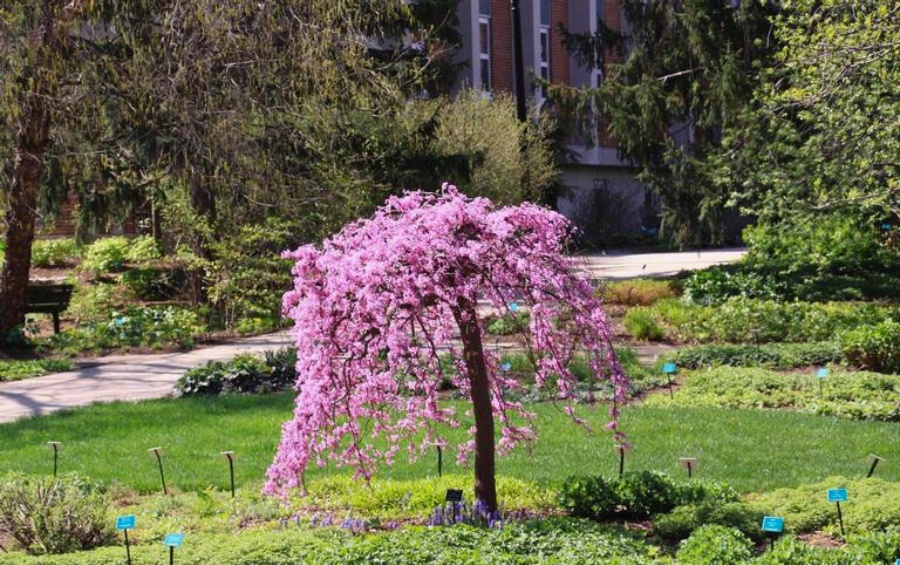
Eastern redbud varieties like this weeping cultivar provide stunning spring color while thriving in Quad Cities microclimates. Photo property of: James Chatfield, Ohio State University, Bugwood.org
Eastern Redbud (Cercis canadensis)
A small but striking tree, eastern redbud announces spring with bright pink blossoms before its heart-shaped leaves emerge. It’s especially well-suited to established Quad Cities neighborhoods like McClellan Heights and Pleasant Valley.
- Vibrant early-spring flowers add seasonal color
- Unique heart-shaped foliage enhances landscape texture
- Thrives in partial shade under larger trees
- Perfect understory tree for older neighborhoods and shaded lots
Sugar Maple (Acer saccharum)
Beloved for its fiery fall foliage, the sugar maple thrives in the well-drained soils found across Bettendorf’s suburbs and Davenport’s hillside neighborhoods. It’s a solid choice for homeowners seeking beauty and longevity.
- Outstanding fall color with brilliant reds and oranges
- Moderate growth rate with strong, durable wood
- Prefers well-drained soils; avoid areas with poor drainage or road salt
- Great fit for suburban yards and hillside properties
Adapted Non-Native Species
Some non-native species have proven highly successful in Quad Cities conditions, often providing specific benefits like disease resistance or unique ornamental features:
London Planetree (Platanus × acerifolia)
With its strong tolerance to urban conditions, the London planetree is a go-to choice for dense areas like downtown Davenport and Rock Island. This hybrid handles stresses that overwhelm most other species.
- Thrives in areas with air pollution and traffic exhaust
- Adapts to compacted or restricted soil conditions
- Performs well in tight planting spaces along streets or plazas
- Excellent choice for high-traffic urban landscapes
Northern Red Oak (Quercus rubra)
A faster-growing alternative to bur oak, the northern red oak offers both resilience and beauty. Its brilliant fall foliage adds striking seasonal color across Bettendorf, Moline, and residential neighborhoods throughout the Quad Cities.
- Faster growth rate than bur oak
- Excellent drought tolerance once established
- Provides vibrant red fall color
- Strong choice for residential lots and community spaces
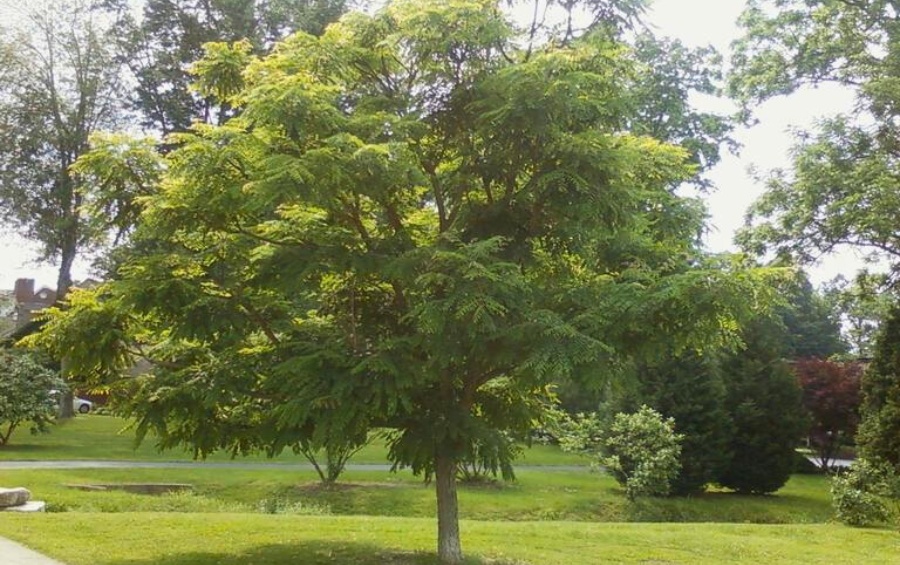
This thriving Kentucky coffee tree demonstrates the long-term success of proper species selection for Iowa growing conditions. Photo property of: Jason Sharman, Vitalitree, Bugwood.org
Kentucky Coffee Tree (Gymnocladus dioicus)
Known for its bold, compound leaves and striking winter form, the Kentucky coffee tree stands out in any landscape. Its soil adaptability makes it a reliable choice for challenging sites across the Quad Cities.
- Distinctive foliage and sculptural winter silhouette
- Handles a wide variety of soil types
- Performs well in tough or neglected planting sites
- Adds unique visual interest to parks and large properties
Species to Avoid in Quad Cities Conditions
Learning from local failures can save significant money and frustration. These species consistently struggle in Quad Cities conditions:
- Ash Species (Fraxinus spp.): The City of Davenport’s forestry department confirms Emerald Ash Borer has made ash trees unsustainable without expensive, ongoing treatment. Avoid all ash species for new plantings.
- Silver Maple (Acer saccharinum): While fast-growing, silver maple develops weak wood structure that leads to storm damage. Poor choice for areas near homes or power lines throughout the Quad Cities region.
- Bradford Pear (Pyrus calleryana): Short lifespan, weak branch structure, and invasive tendencies make this species a poor long-term investment despite early popularity.
EXPERT INSIGHT: “Proper species selection is about understanding the long-term relationship between the tree and its environment. We focus on species that will thrive for decades, not just survive the first few years.” – Dave Miller, Certified Arborist and Branch Manager at Arbor Masters
When Is the Best Time to Plant Trees?
Successful tree establishment requires careful timing and consistent care throughout the critical first year. Understanding the seasonal patterns in the Quad Cities’ continental climate helps ensure your investment thrives long-term.
Optimal Planting Windows
The Quad Cities’ climate offers two distinct planting seasons, with fall emerging as the preferred option for most species and situations. Research consistently shows fall planting advantages in Iowa and Illinois.
Fall Planting (September-October) – Preferred Season:
- Warm soils encourage rapid root development
- Cooler air temperatures reduce plant stress
- Trees focus energy on root establishment rather than leaf production
- Natural dormancy period allows maximum root growth before spring demands
- Typically 6-8 weeks before ground freeze in the Quad Cities
Spring Planting (April-May) – Alternative Window:
- Soil has thawed and warmed for root activity
- Full growing season available for establishment
- Requires more intensive summer watering and monitoring
- Best window is mid-April through mid-May
How to Care for Newly Planted Trees in Their First Year
The first year determines whether your tree will thrive for decades or struggle indefinitely. Here’s a season-by-season care schedule adapted for Quad Cities conditions:
Fall (September-November) – Planting Season
- Plant during optimal window for best establishment
- Water deeply once per week if rainfall is insufficient
- Apply 2-3 inch mulch layer, keeping mulch away from trunk
- Continue watering until ground freezes
Winter (December-February) – Protection Phase
- Protect from road salt damage
- Install tree guards against rodent damage and deer browsing (where deer chew on bark and shoots)
- Avoid pruning during dormant season unless removing damaged branches
- Monitor for ice and snow damage
Spring (March-May) – Growth Resumption
- Resume regular watering as soil thaws
- Inspect for winter damage or pest issues
- Remove any protective materials that aren’t biodegradable
- Begin monitoring for signs of new growth
Summer (June-August) – Intensive Care Period
- Increase watering frequency during hot, dry spells
- Provide deep watering twice per week
- Watch for signs of stress, like wilting or leaf drop
- Maintain mulch layer to conserve moisture
Should I Plant Trees Myself or Hire a Professional?
The decision between DIY tree planting and hiring a professional service involves significant safety considerations and long-term consequences that extend far beyond initial investment. Improper planting techniques can create hazards that threaten your property, your family’s safety, and the trees themselves.
Safety Risks of Improper Tree Planting
Tree planting mistakes can create dangerous situations that persist for decades. Understanding these risks helps homeowners make informed decisions about professional services versus DIY approaches.
Property Damage Risks:
- Foundation damage from trees planted too close to structures
- Roof and siding damage from overgrown branches
- Sidewalk and driveway upheaval from invasive root systems
- Underground utility line damage during digging
- Septic system interference from inappropriate species selection
Personal Safety Hazards:
- Unstable trees from improper planting depth
- Falling branches due to poor structural development
- Storm damage from trees with inadequate root systems
- Power line contact from incorrect species placement
- Injury during planting from improper tool use or lifting techniques
Tree Health Consequences:
- Premature death from planting too deep or too shallow
- Chronic stress leading to pest and disease susceptibility
- Poor growth patterns requiring expensive corrective pruning
- Girdling roots that slowly strangle the tree
- Soil compaction around root zones
Common DIY Planting Mistakes
Even well-intentioned homeowners frequently make critical errors that compromise tree health and safety. Professional arborists regularly encounter these preventable problems:
Planting Depth Errors:
- Burying the root flare (where the trunk and roots meet) leads to root rot and decline
- Shallow planting creates unstable trees prone to windthrow
- Incorrect depth affects nutrient and water uptake
- Professional equipment ensures precise planting depth
Site Selection Problems:
- Ignoring mature tree size leads to overcrowding
- Poor drainage assessment causes root problems
- Utility conflicts create expensive future complications
- Inadequate soil preparation limits root development
Species Mismatches:
- Choosing trees unsuitable for local climate
- Selecting species with known pest problems
- Ignoring soil compatibility requirements
- Aesthetic choices that ignore practical considerations
Professional Advantages Beyond Safety
Professional tree services bring specialized knowledge and equipment that significantly improve planting success while reducing risks to property and people.
Specialized Equipment and Techniques:
- Hydraulic tree spades for precise hole dimensions
- Root ball handling equipment to prevent damage
- Soil amendment tools for proper preparation
- Safety equipment for working near utilities
Professional Expertise:
- Species selection based on decades of local experience
- Understanding of municipal requirements and permits
- Soil analysis and amendment recommendations
- Integrated pest management planning
How Arbor Masters Makes Tree Planting in the Quad Cities Easy
With over 65 years of tree care expertise in the Midwest, Arbor Masters has built lasting partnerships with Quad Cities homeowners by eliminating the guesswork and risks that come with DIY tree installation. Our collaborative approach addresses every aspect of successful tree establishment while protecting your property and investment.
Local Expertise That Matters:
- Deep knowledge of Quad Cities soil conditions and microclimates
- Experience with species performance in Iowa’s variable weather
- Understanding of local pest pressures and disease issues
- Familiarity with municipal requirements across the region
Comprehensive Safety Protocols:
- TCIA accreditation ensuring industry-leading safety standards
- Full insurance coverage protecting your property
- ISA Certified Arborists overseeing every project
- Professional equipment eliminating DIY risks
Complete Partnership Support:
- Site evaluation and species recommendation
- Permit handling and utility coordination
- Professional installation with proper techniques
- First-year care monitoring and adjustment
- Long-term maintenance planning and support
Investment Protection:
- Written guarantees on all planted trees
- Replacement coverage for establishment failures
- Ongoing support for tree health questions
- Preventive care programs to maintain tree health
By choosing Arbor Masters as your trusted partner for every tree planting project, you eliminate the safety risks, potential mistakes, and time investment of DIY planting while ensuring your new trees receive the professional care they need to thrive for generations.
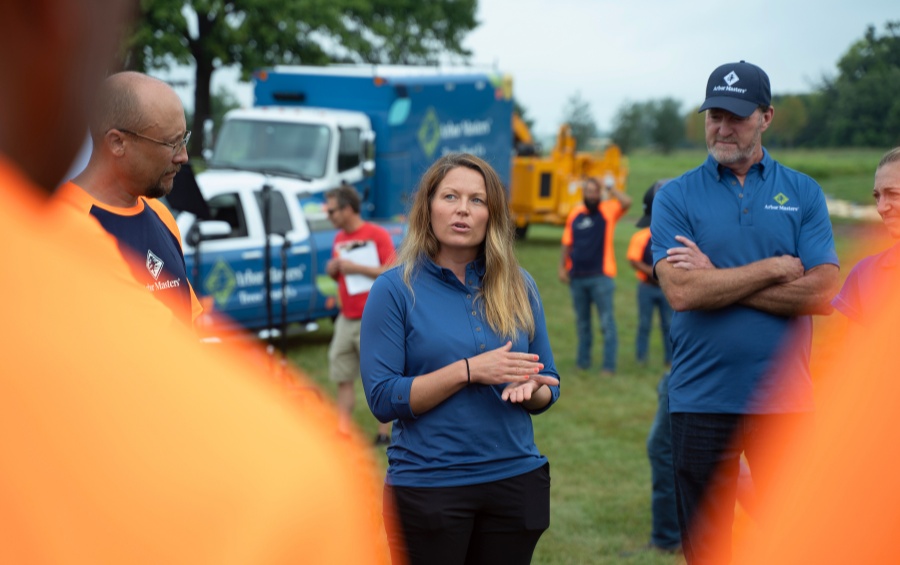
Arbor Masters’ comprehensive safety protocols and team coordination ensure professional tree care services throughout the Quad Cities region.
Frequently Asked Questions
Do I need permits to plant trees on my property in the Quad Cities?
Generally, no permits are required for planting trees on private property in Davenport, Bettendorf, Moline, or Rock Island. Some HOAs or historic districts may have restrictions though, so check local covenants. Street tree planting typically requires municipal approval and permits.
How far apart should I space multiple trees when planting?
Tree spacing depends on the mature size of the species you’re planting. As a general rule, space trees at least half their mature canopy width apart. For large shade trees, like oak or maple, plan for 40-60 feet between trees. Medium trees, like redbud or crabapple, need 20-30 feet spacing. Always consider the growth potential of neighboring existing trees and plan for adequate sunlight, air circulation, and root space for each tree to thrive.
How long does it take for newly planted trees to become established?
Tree establishment typically takes 1-3 years depending on species and planting conditions. The first year is most critical for root development and survival. By year two, most trees show significant growth and improved stress tolerance. Full establishment and normal growth pattern when trees can better handle drought and other environmental stresses.
What should I do if my newly planted tree isn’t thriving?
First, evaluate watering practices; both over and under-watering can cause problems. Also check for proper mulching and root flare exposure. If problems persist, contact an ISA Certified Arborist for diagnosis. Many issues in the first year relate to planting depth, drainage problems, or inadequate care. Professional assessment can often save struggling trees if addressed quickly.
Partner with Quad Cities Tree Planting Experts Today!
Choosing the right trees and planting approach for your Quad Cities property doesn’t have to be overwhelming. Arbor Masters has been helping Davenport, Bettendorf, Moline, and Rock Island homeowners create beautiful, thriving landscapes since 1960.
Our ISA Certified Arborists understand the unique challenges of Iowa and Illinois growing conditions from Mississippi River bottomland soils to prairie clay and everything in between. We’ve seen which species thrive in McClellan Heights’ historic setting, which trees handle Bettendorf’s suburban conditions, and how to overcome soil challenges throughout the Quad Cities region.
Ready to start your tree planting project? Call us at 563-355-7508 or request a free consultation online. Let’s discuss how the right trees and proper planting can enhance your property for generations to come.
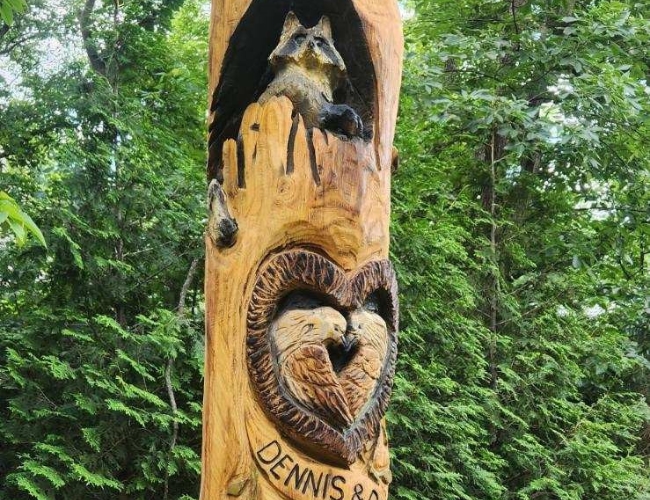
Get the latest local news, tree care tips, special offers, and company updates directly to your inbox! It's easy to subscribe and there's no spam - we promise.
"*" indicates required fields

